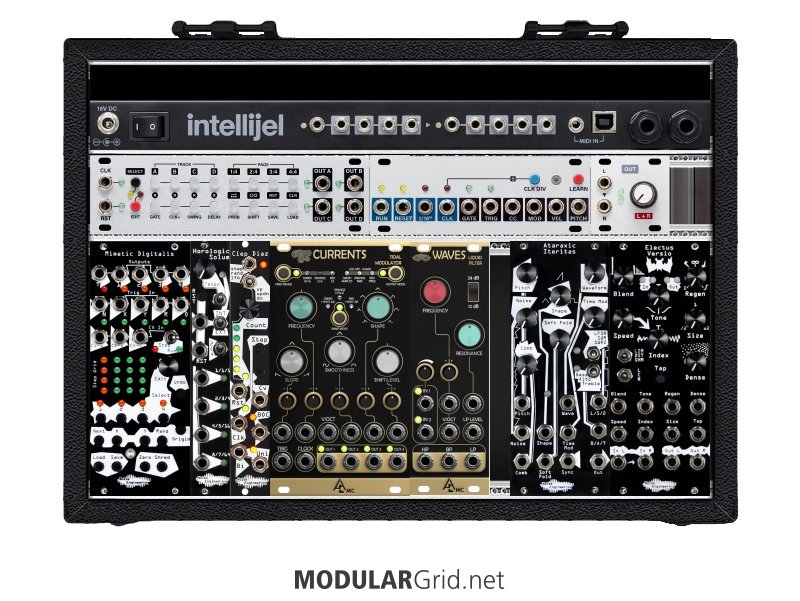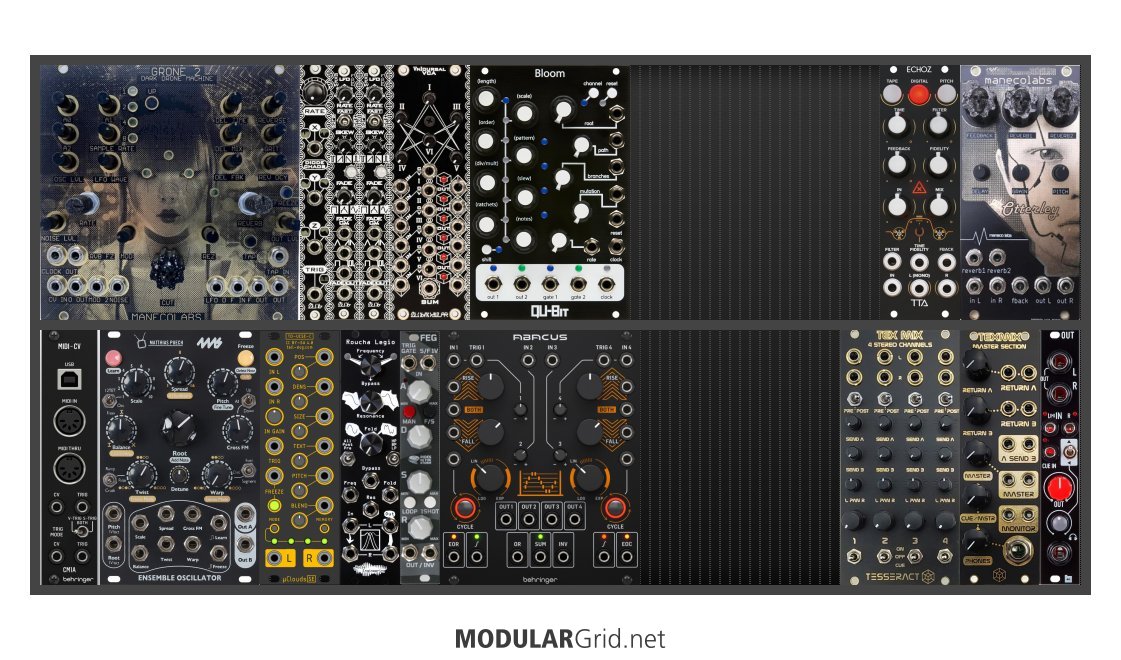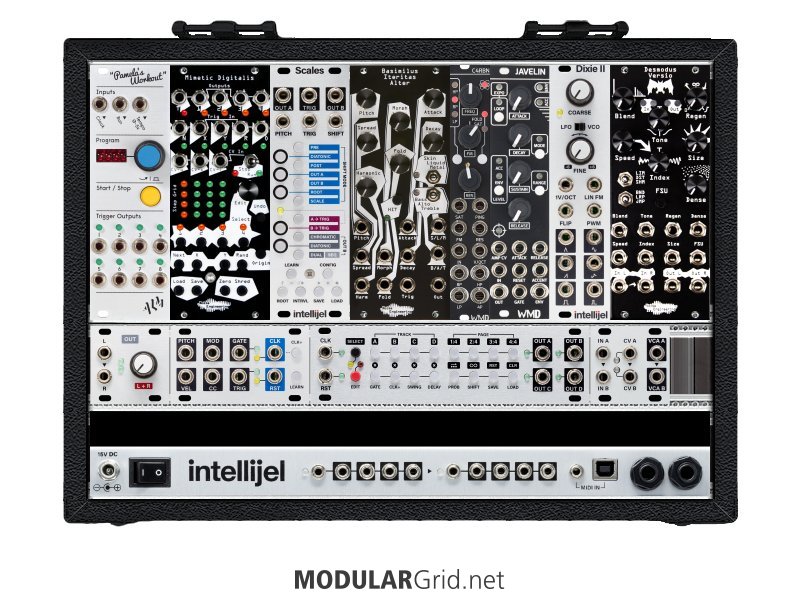Hi there,
actual link to the rack and not just a crappy jpg:

I am planning a new rack that is aimed at minimal, monophonic techno basslines (and maybe leads). A brief disclaime, I know this is a small 62HP setup and there will be folks here that scream go bigger, but thats not the point of this setup. It is not supposed to be a standalone do-it-all solution. I want it to become a piece in my setup that is great a doing good and interesting basslines that I can keep evolving. I want to couple it with an Elektron Syntakt that takes care of all drum/percussion duties and the main clock. I hope you can help me figure out if I am missing a crucial part in this setup or should replace some modules against more versatile modules.
Normally I'd be advocating a much bigger rack, however as you are being mission specific... I'd probably go a bit bigger though! maybe the next size up pallete.. just so you have a bit of space for some utilities... they will add a lot of versatility to your patching for not a lot more cash...
Let me go through my thought process in this setup:
Sequencing: I want to use steppy and mimiteic digitalis since I love what people are doing with the combination, this is what really got me hooked into planning and building my own modular synth in the first place
hmmm - I'm not convinced of these modules... steppy is a trigger sequencer - ie very short pulses - not gates, which is generally what you want for envelopes... (some envelopes will work with triggers - make sure you have an envelope generator that can be triggered and not gated) & mimetic digitalis does not have a quantizer built in - which is fine, if you want to make non-12tet music, or you have an external quantizer, which you don't...
also as you have the midi module - I'd just take clock & pitch/gate sequencing from that - Syntakt can sequence pitch & gate as well as drums can't it??? idk I've never used any elektron gear!
Clock: I have the Horlogic Solum in here for clocking, wich seems to have nice capabilities of also splitting the clock
How are you intending to clock this? & what are you intending to trigger with the divided clock - there's not really enough to warrent it in the rack imo
LFO: Clep Diaz, but I am not 100% sure about it since the After Later Audio Clone of MI Tides can do LFO duties as well. Maybe you have some suggestions here.
Envelope: After Later Audio Clone of MI Tides
I would suggest you need both of these or at least both lfos and an envelope... personally I'd rather have more lfos and a single, simpler, smaller envelope (that can be triggered) - I'd also want attenuverters & offsets for the lfos - but tides can also be used as a vco...
Filter: After Later Audio Clone of MI Ripples
decent choice... if a bit vanilla... a wasp might be a better bet, as it would add grit, but might not fit in the case
Voice: Noise Engineering AI since I like what people do with it. Still I am not sure if I also should have a second Oscillator in here, maybe a simpler one?
maybe, but then you'rre running out of space & you'd need a mixer...
Reverb/Delay/Distortion: Noise Engineering Versio since it is flexible with the Firmware and sounds really cool.
remember you can only do 1 of these at a time... and have to take it out of the case & reflash to swap which sounds like a pain to me... personally I'd want at least 2 of reverb/delay/distortion (if not handled elsewhere)
so yeah.. you're missing some things & duplicating some things... I'd have a serious think about these things before parting with cash, if I were you
"some of the best base-level info to remember can be found in Jim's sigfile" @Lugia
Utility modules are the dull polish that makes the shiny modules actually shine!!!
sound sources < sound modifiers < modulation sources < utilities






